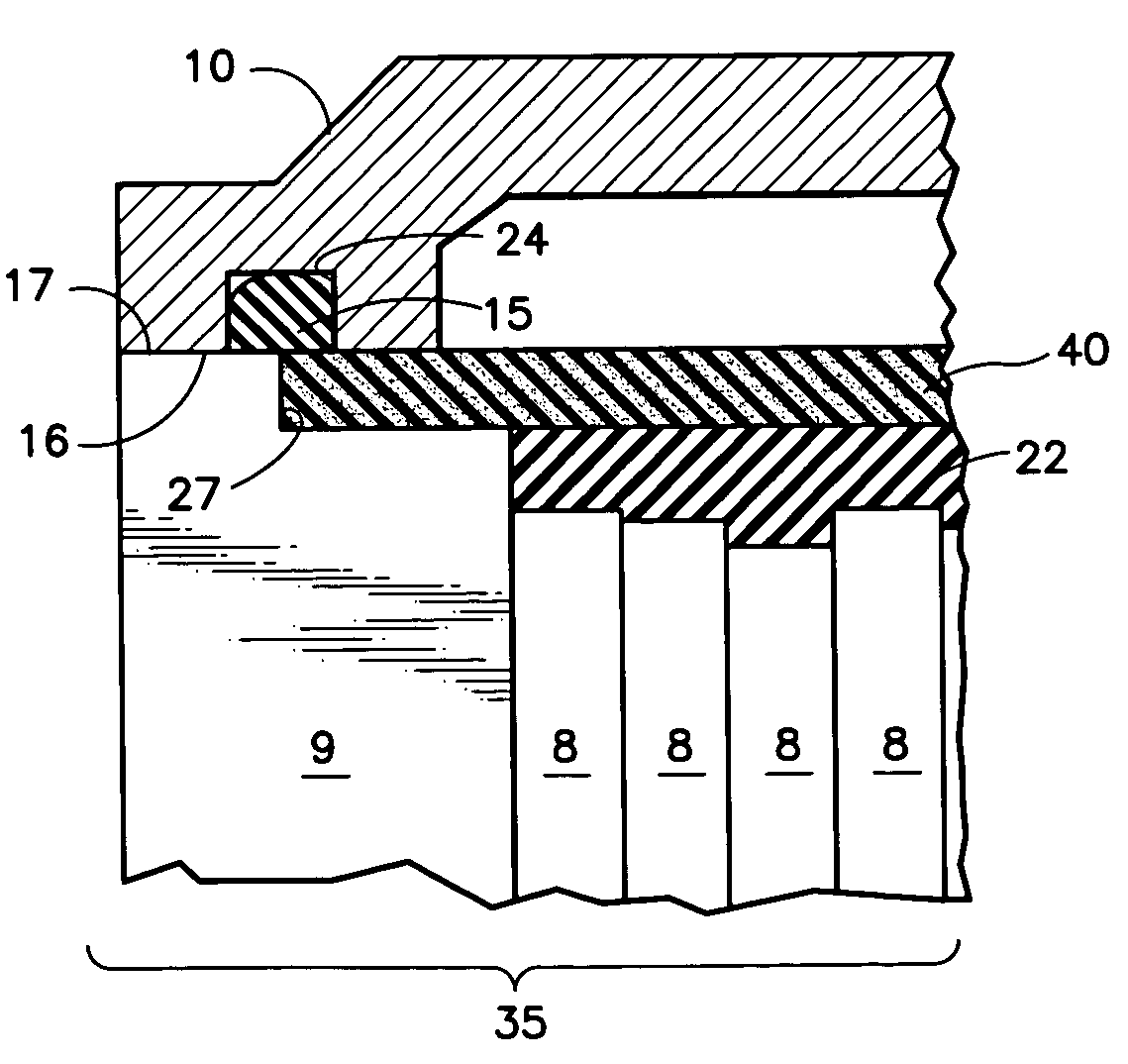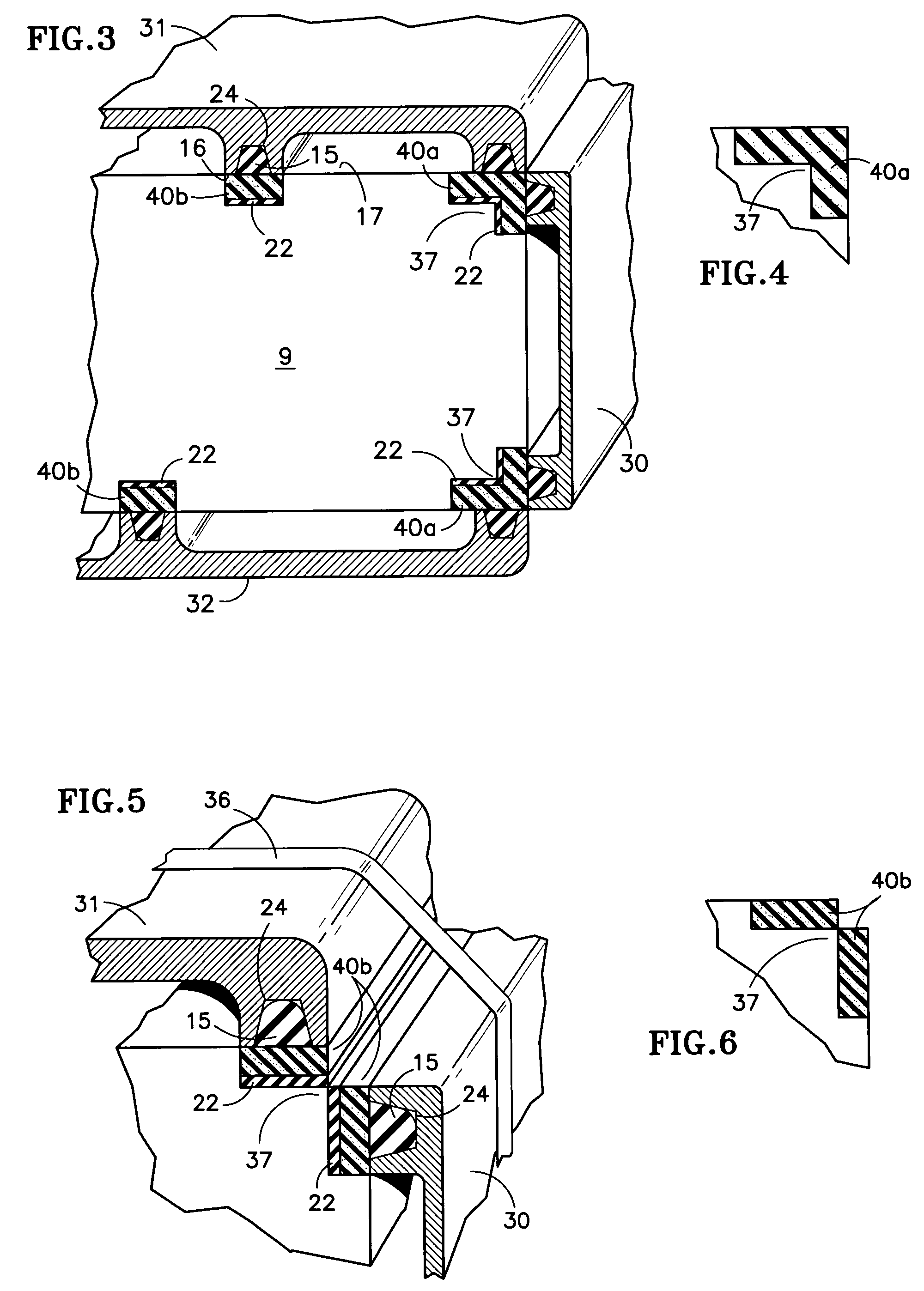Fuel cell manifold seal with rigid inner layer
a manifold seal and fuel cell technology, applied in the direction of cell components, electrochemical generators, cell component details, etc., can solve the problems of reducing the loading concentration, affecting the efficiency of the manifold, so as to reduce the loading concentration and minimize leakage
- Summary
- Abstract
- Description
- Claims
- Application Information
AI Technical Summary
Benefits of technology
Problems solved by technology
Method used
Image
Examples
Embodiment Construction
[0026]Referring to FIG. 2, a reactant gas manifold 10 is positioned above a cell stack assembly 35 having an uneven skyline. At least one silicone rubber filler layer 22, such as GE RTV 118, Shin Etsu KE3476T, or any compatible elastomer, is applied to the surface of the skyline to form a relatively flat, smooth surface above the cells 8.
[0027]Endplate 9 of the present invention includes a notch 27 to receive an end portion of a rigid dielectric strip 40 coplanar with the contact surface 17 of the endplates 9 and extending over the CSA sealing area to spread the sealing load uniformly. The rigid strip 40 may be adhesively secured to the skyline silicone rubber filler layer 22 and on the notch surfaces of the endplates 9. In order to prevent shorting of the cells 8, the rigid strip 40 must be a dielectric, such as a NEMA G11 fiberglass reinforced plastic, or a polymer-coated metal. Other dielectric composite materials or metallic materials with a dielectric coating, known to those sk...
PUM
| Property | Measurement | Unit |
|---|---|---|
| compressive pressure | aaaaa | aaaaa |
| electric current | aaaaa | aaaaa |
| sealing force | aaaaa | aaaaa |
Abstract
Description
Claims
Application Information
 Login to View More
Login to View More - R&D
- Intellectual Property
- Life Sciences
- Materials
- Tech Scout
- Unparalleled Data Quality
- Higher Quality Content
- 60% Fewer Hallucinations
Browse by: Latest US Patents, China's latest patents, Technical Efficacy Thesaurus, Application Domain, Technology Topic, Popular Technical Reports.
© 2025 PatSnap. All rights reserved.Legal|Privacy policy|Modern Slavery Act Transparency Statement|Sitemap|About US| Contact US: help@patsnap.com



